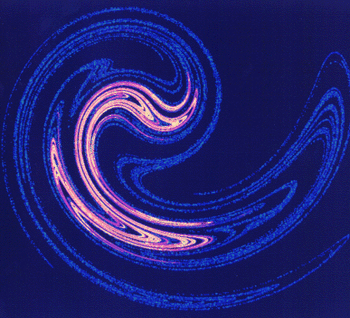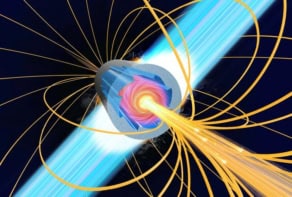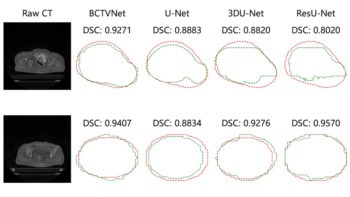A foolproof way to send and receive encrypted messages could follow the first demonstration of a technique to predict chaotic fluctuations in laser light. Alan Shore and colleagues at the University of Wales in Bangor applied the technology to a pair of lasers - one was used to send the encoded message and the other received and deciphered it. Secure encryption techniques are crucial for sending private information over the Internet (S Sivaprakasam et al 2001 Phys. Rev. Lett. 87 154101-1).

The intensity of light from a laser can vary unpredictably – or ‘chaotically’ – if a tiny portion of the laser output is fed back into the laser cavity. A message ‘imprinted’ onto this complex signal can only be recovered by a receiver if the chaotic signal can be subtracted. This means the chaotic signal must be reproduced in another laser at the receiving end.
Identical chaotic conditions can be created in the transmitter and receiver lasers if they are linked. But on its way to the receiver, the intensity of the encrypted signal continues to vary chaotically. By the time it reaches the receiver laser, the signal no longer matches the signal generated by the receiver laser. The receiver laser therefore needs to predict the variations that take place in the encrypted signal as it travels between the lasers.
To tackle this problem, Shore and team sent a single feedback signal from their transmitter laser to the receiver laser, and also back to the transmitter laser. This created identical conditions in both lasers. But Shore’s team sent the feedback signal on a short route to the receiver and a longer route to the transmitter, so the chaotic signal produced by the receiver laser was 3.5 nanoseconds ahead of that produced by the transmitter. This delay corresponded exactly with the extra time the feedback signal took to reach the receiver. Such ‘anticipating synchronization’ allows the receiver laser to create a chaotic signal identical to the one in the encoded signal, so the message can be retrieved.
Shore and colleagues now plan to investigate how the technique – which some experts are sceptical about – would work in real optical communications systems. They are also optimistic that their theory may have diverse applications. “The process of synchronization could also be used to control different types of chaos in non-physical systems, including biological or economical systems”, Shore told PhysicsWeb. Such systems have a certain response time, which is analogous to the time it takes the signal to reach the transmitter in the laser experiment.
“The work by Shore’s group is a nice experimental demonstration of the idea proposed by Voss [Phys. Rev. E 61 5115],” Edward Ott of the University of Maryland told PhysicsWeb. “I anticipate that people will come up with schemes to exploit this phenomenon”.



